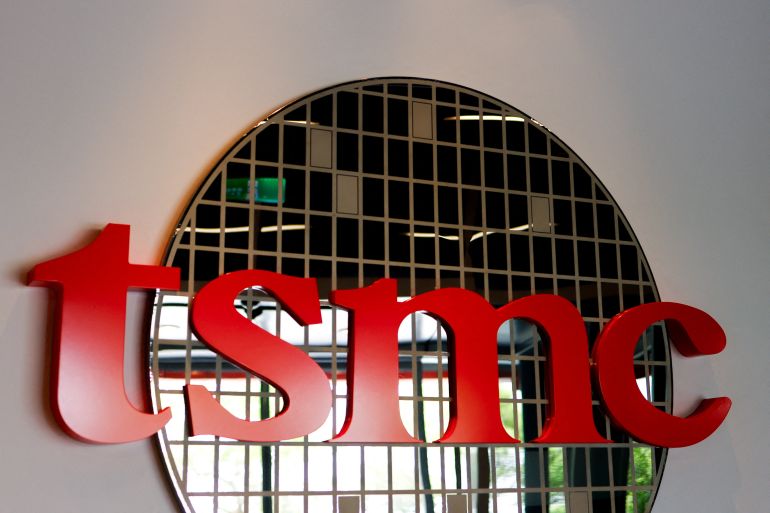TSMC posts forecast-beating profit amid soaring demand for AI chips
World’s largest contract chipmaker reports record $10.1bn net profit for the third quarter.
The TSMC logo is seen at the TSMC Museum of Innovation in Hsinchu, Taiwan [Ann Wang/Reuters]Published On 17 Oct 202417 Oct 2024
Taiwan Semiconductor Manufacturing Company has announced a forecast-busting quarterly profit amid surging demand for chips used to power artificial intelligence.
TSMC, the world’s largest contract chipmaker, reported a net profit of 352.3 billion Taiwanese dollars ($10.1bn) for the third quarter, up 54.2 percent from the same period last year.
The figure marked the firm’s best-ever quarterly performance and was comfortably ahead of market estimates.
TSMC said revenues hit $23.5bn, up 36 percent on-year, and that full-year revenue was forecast to grow nearly 30 percent.
“Our business in the third quarter was supported by strong smartphone and AI-related demand for our industry-leading three nanometre and five nanometre technologies,” TSMC chairman CC Wei said in a briefing to analysts.
“Moving into the fourth quarter, we expect our business to continue to be supported by strong demand for our leading-edge process technologies.”
TSMC’s strong performance comes days after Dutch firm ASML, which supplies chip-making equipment to the Taiwanese company, forecast lower than expected sales next year, dragging down shares 16 percent.
TSMC, which is Asia’s most valuable publicly listed company, has seen its stock price surge 75 percent this year as the tech sector pours resources into the development and rollout of AI.
The chipmaker has been been pushing to diversify production beyond Taiwan to reduce risks to its business amid heightened geopolitical tensions between the United States and China, which considers the self-governing island its territory.
Beijing on Monday held large-scale military exercises around the island that included a simulated blockade.
TSMC said on Thursday that it expected the first of three fabs, or fabrication plants, under construction in the US state of Arizona to see volume production in 2025, with the second and third facilities to follow in 2028 and by the end of the decade, respectively.
